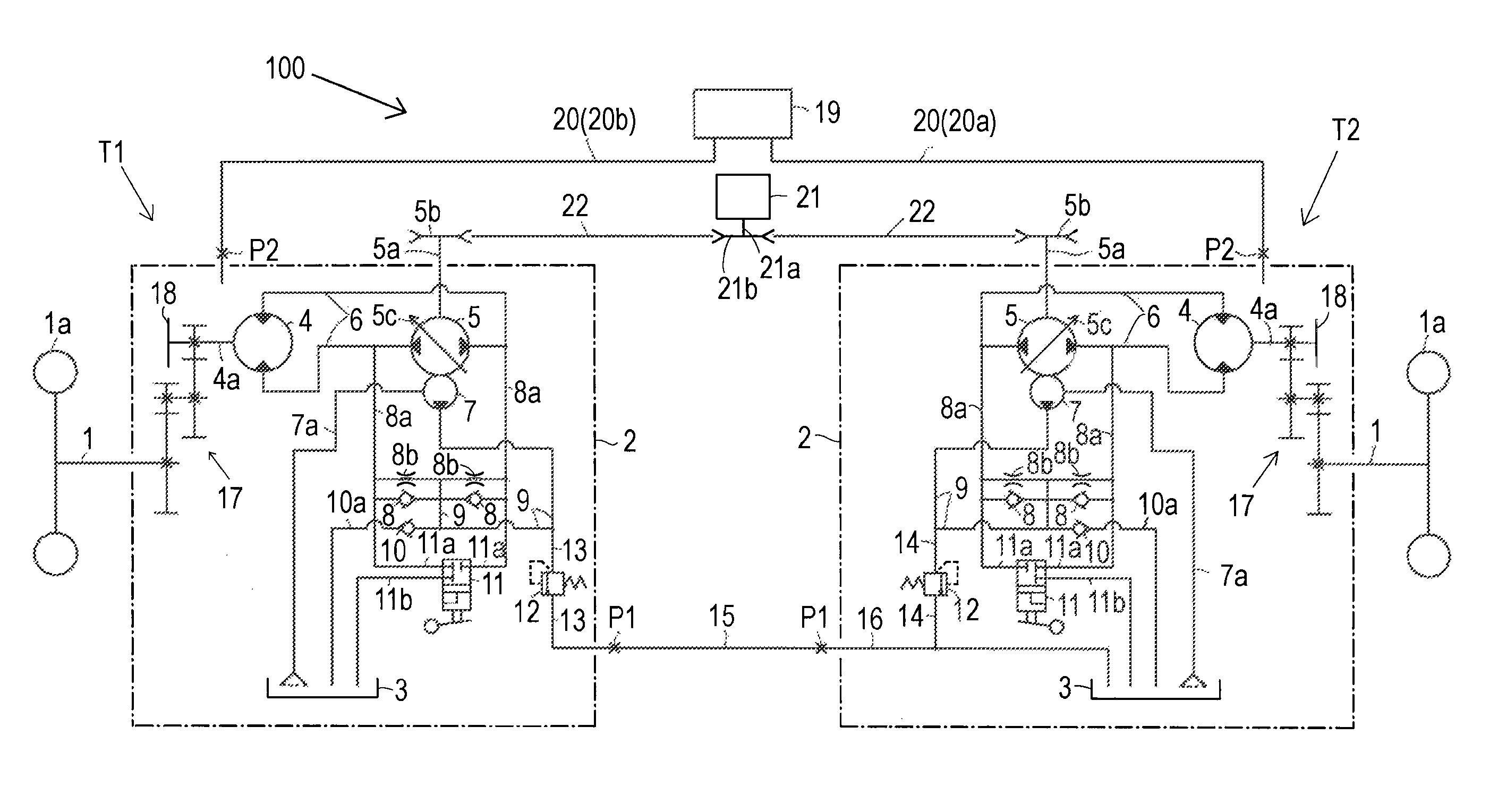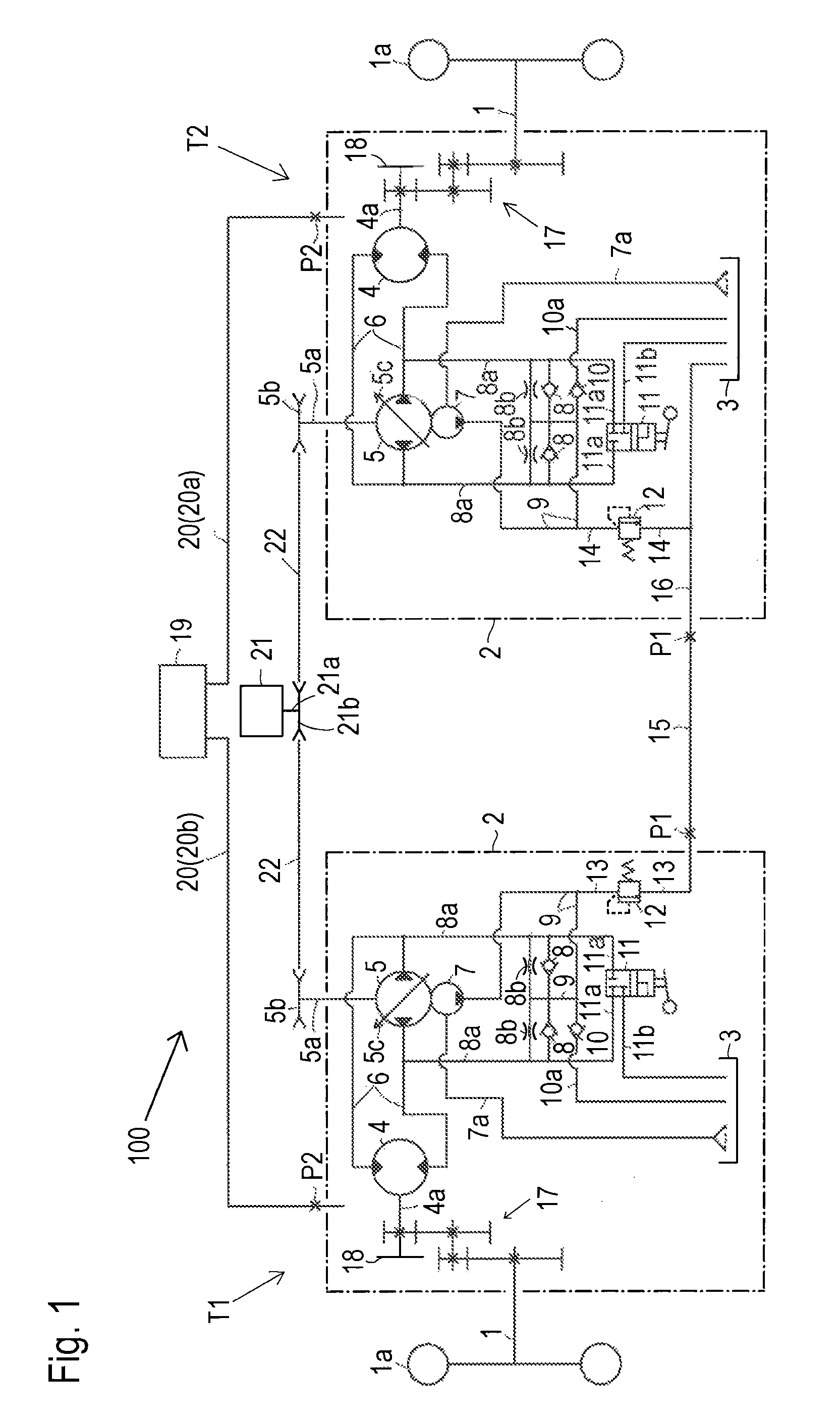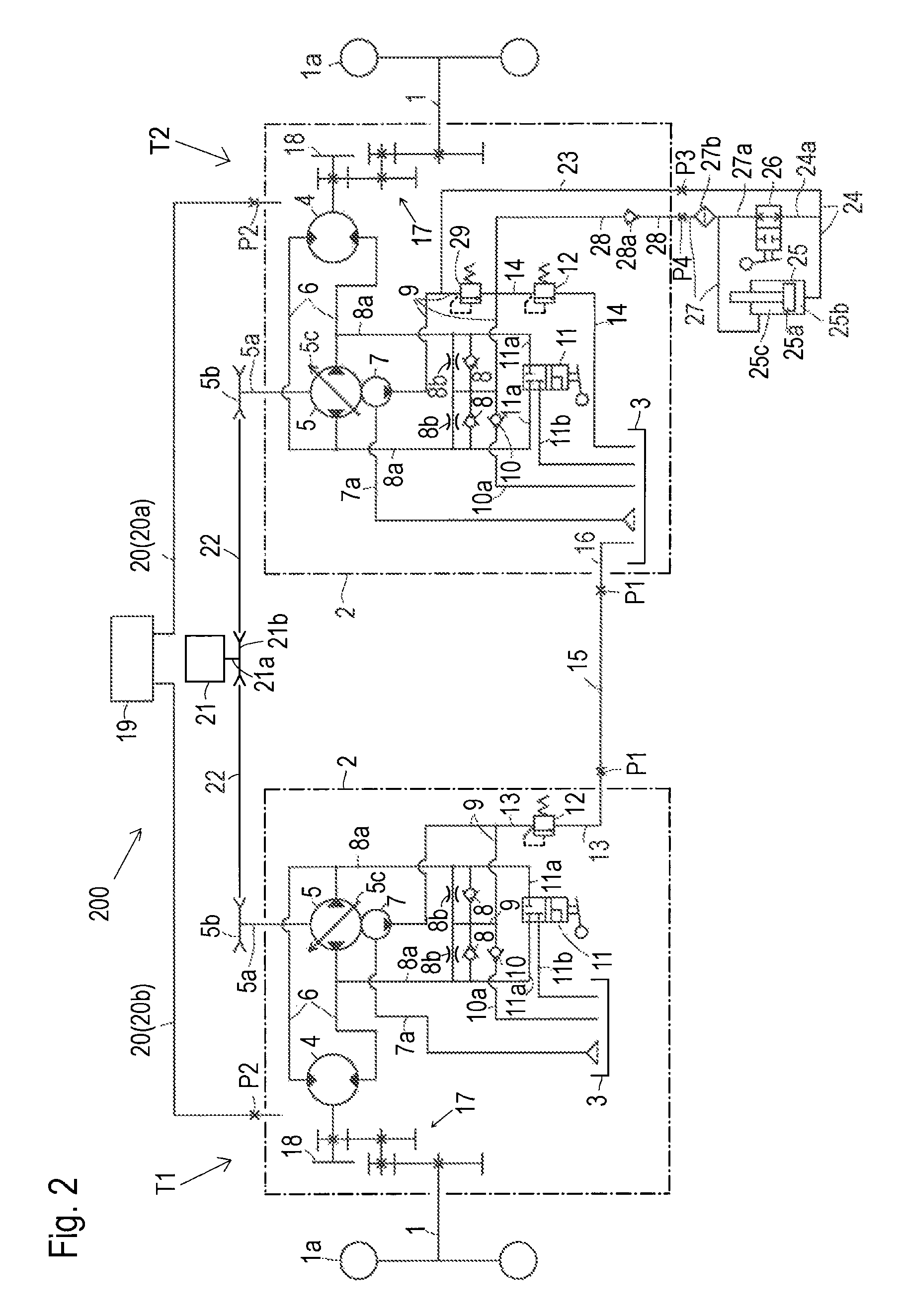[0012]An object of the invention is to provide an effective and economical hydraulic fluid circulation system for cooling the hydraulic transmission system, which especially needs no additional charge pump for making the flow of fluid from one transaxle to the other transaxle, wherein even if the hydraulic fluid circulation system is utilized for operating a hydraulic actuator, the expected efficiency of cooling the entire hydraulic transmission system by the cooling system can be kept while ensuring expectedly smooth operability of the hydraulic actuator.
[0014]Therefore, part of the fluid delivered from the charge pump of the first transaxle is supplied to the charge pressure regulation valve, and the fluid released from the charge pressure regulation valve is fully supplied to the first pipe without branching, thereby efficiently cooling the entire hydraulic transmission system with no additional charge pump increasing costs. Further, if the first pipe is provided on any intermediate portion thereof with no hydraulic actuator resisting the flow of fluid in the first pipe, the first pipe further surely makes the flow of fluid therein from the first port of the transaxle to the first port of the second transaxle.
[0018]Therefore, the hydraulic actuator does not interrupt the flow of fluid in the first pipe, thereby further ensuring the sufficient flow of fluid in the first pipe for cooling the entire hydraulic transmission system. The operation of the hydraulic actuator is prevented from causing loss of hydraulic fluid because it can use overflowing fluid of the fluid sump of the second transaxle that is liable to overflow because fluid delivered from the charge pump of the second transaxle as well as fluid delivered from the charge pump of the first transaxle via the first pipe is drained to the fluid sump of the second transaxle. Further, if the operated hydraulic actuator reaches its limit position so as to interrupt the flow of fluid therethrough from the third pipe to the fourth pipe, the actuator pressure regulation valve regulates the pressure of fluid in the charge passage at the downstream side thereof in response to an unexpected hydraulic pressure applied from the third port to the fluid extraction passage according to the interruption of the flow of fluid between the third and fourth pipes.
[0020]Therefore, part of the fluid delivered from the charge pump of the first transaxle is passed through the first orifice and is supplied to the first pipe, thereby cooling the entire hydraulic transmission system with no additional charge pump increasing costs. If the first pipe is provided on any intermediate portion thereof with no hydraulic actuator resisting the flow of fluid in the first pipe, the first pipe further surely makes the flow of fluid therein from the first port of the transaxle to the first port of the second transaxle. Even if a hydraulic actuator is disposed on an intermediate portion of the first pipe so as to resist the flow of fluid in the first pipe, and the moved hydraulic actuator reaches a limit position of its movement, the first orifice resists backpressure of fluid from the hydraulic actuator toward the charge passage of the first transaxle, thereby preventing hydraulic pressure in the charge passage of the first transaxle from being suddenly increased by the backpressure from the hydraulic actuator on the first pipe.
[0024]Therefore, the part of the fluid delivered from the charge pump of the first transaxle and passed through the first orifice is fully supplied to the first pipe without branching, thereby further efficiently cooling the entire hydraulic transmission system with no additional charge pump increasing costs. If the first pipe is provided on any intermediate portion thereof with no hydraulic actuator resisting the flow of fluid in the first pipe, the first pipe further makes sure fluid flows therein from the first port of the transaxle to the first port of the second transaxle.
[0030]Therefore, while the first pipe interposed between the first ports of the first and second transaxles makes fluid flow from the first transaxle to the second transaxle, the third pipe interposed between the third ports of the first and second transaxles makes fluid flow from the second transaxle to the first transaxle, thereby promoting fluid circulation between the first and second transaxles for cooling the hydraulic transmission system. The flow of fluid in the third pipe from the second transaxle to the first transaxle is also used for operating the second hydraulic actuator. The flow of fluid in the third pipe from the third port of the second transaxle to the third port of the first transaxle is ensured without interruption so as to prevent the second orifice from being unexpectedly pressurized by interruption of the flow of fluid in the third pipe because it is allowed to pass the second hydraulic actuator or the second switching valve regardless of whether the second switching valve is opened or closed. In this way, the fluid circulation system for the hydraulic transmission system is utilized for operating the two hydraulic actuators.
 Login to View More
Login to View More  Login to View More
Login to View More 


